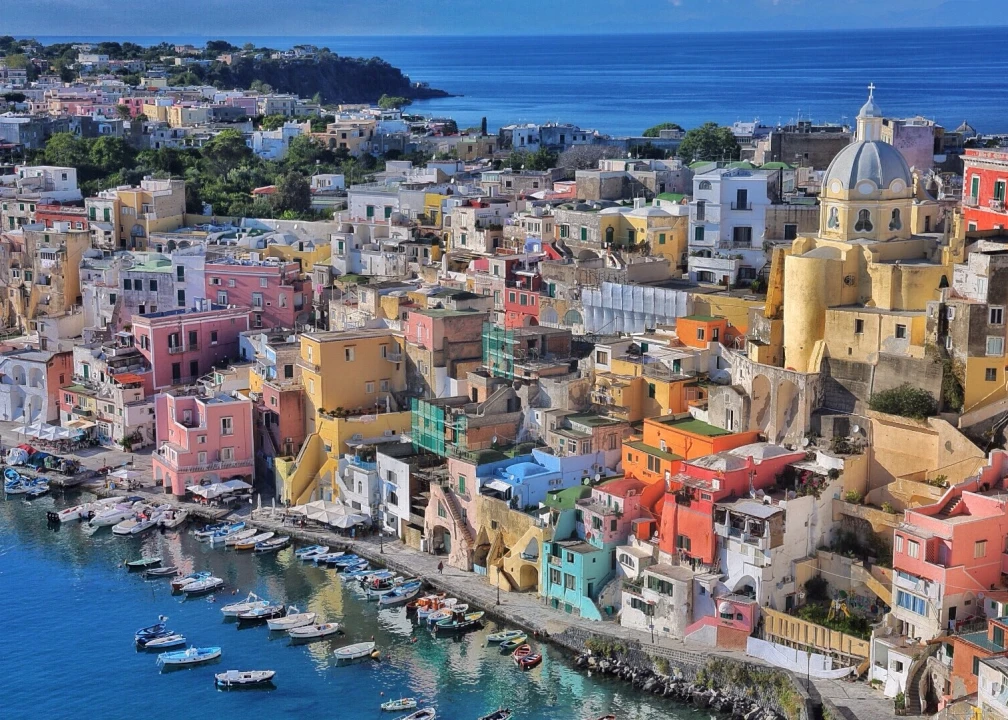For travelers in search of the opportunity to relax by the sea - yet still partake in an active cultural and social scene - a trip to the lovely islands of the Bay of Naples is definitely one for the bucket list: we’re talking about Procida, Ischia and Capri. A long weekend is ideal for enjoying the beauties on display on these three islands and for living both nature and the sea to their fullest.
Procida, the smallest island in the Campanian Archipelago, has been chosen by renowned directors time and again as the ideal setting for several cinematic masterpieces. Of volcanic origin, Procida is also connected to the Island of Vivara by a narrow bridge.
Not only is the sea an important trait of Procida, but also its narrow streets and churches, which somehow pair the tranquility of the beach, with walks through the town center to admire the architecture of centuries past: worth visiting in particular are the Abbey of San Michele Arcangelo, which had a central role in Procida's religious and cultural history. It rises on the Terra Murata Promontory, with the sea a steep drop below. Two beaches that visitors should make every effort to reach are the Beach at Pozzo Vecchio (a protagonist in scenes from the beloved film Il Postino) and Chiaiolella Beach (the Island’s most frequented).
From Procida, one can reach Ischia in the matter of a half-hour. Ischia is the largest of all the Campanian islands; vast and morphologically diverse, it welcomes about 6 million visitors annually.
Among the six municipalities that it comprises, it is Ischia Commune that is the most extensive, and thus divided into two parts: Ischia Ponte is its evocative historic center marked by ancient paths and bottegas, while Ischia Porto is a tiny fishing village. The Aragonese Castle in Ischia Ponte, constructed by the tyrant Hiero of Syracuse in 474 B.C., is the most-visited monument on the entire Island.
Once atop the summit on which the Castle stands, be sure not to miss the Cathedral di Santa Maria Assunta where, in 1509, Ferrante d’Avalos and Vittoria Colonna exchanged their vows. Inside is a crypt holding frescoes by the Giotto school painters. Because Ischia also has a wealth of regenerating natural springs, the thermal bath parks and spas here are practically more than can be counted. More importantly, they are appreciated throughout the world.
The last island on our itinerary of Naples Bay is that of Capri, a summer residence of choice since Roman times, and stomping ground for poets, writers and a slew of legendary personages. The famed Piazzetta di Capri is the traditional launchpad for a visit to the rest of the Island.
Everything on Capri is reminiscent of the splendor for which the Island is known: from the spectacular Gardens of Augustus (from the 1930s), to the Certosa (Basilica) di San Giacomo, and the marvelous villas surrounded by blooms and flowers. Among these is Villa Jovis, the ancient residence of Emperor Tiberius that dominates Capri’s position against both Naples Bay and the Amalfi Coast, as well as the port at Marina Grande. Those in search of a clean, clear sea, the renowned Grotta Azzurra at Anacapri is a must – as are the Faraglioni, three jagged peaks immersed in the water. Having been divided from the coast in a landslide, the Faraglioni donate a gorgeous scenography to the landscape.
After sunset, life on the three islands finds its best definition in romantic walks and in the typical cuisine, served at characteristic restaurants offering only delicious local specialties.




